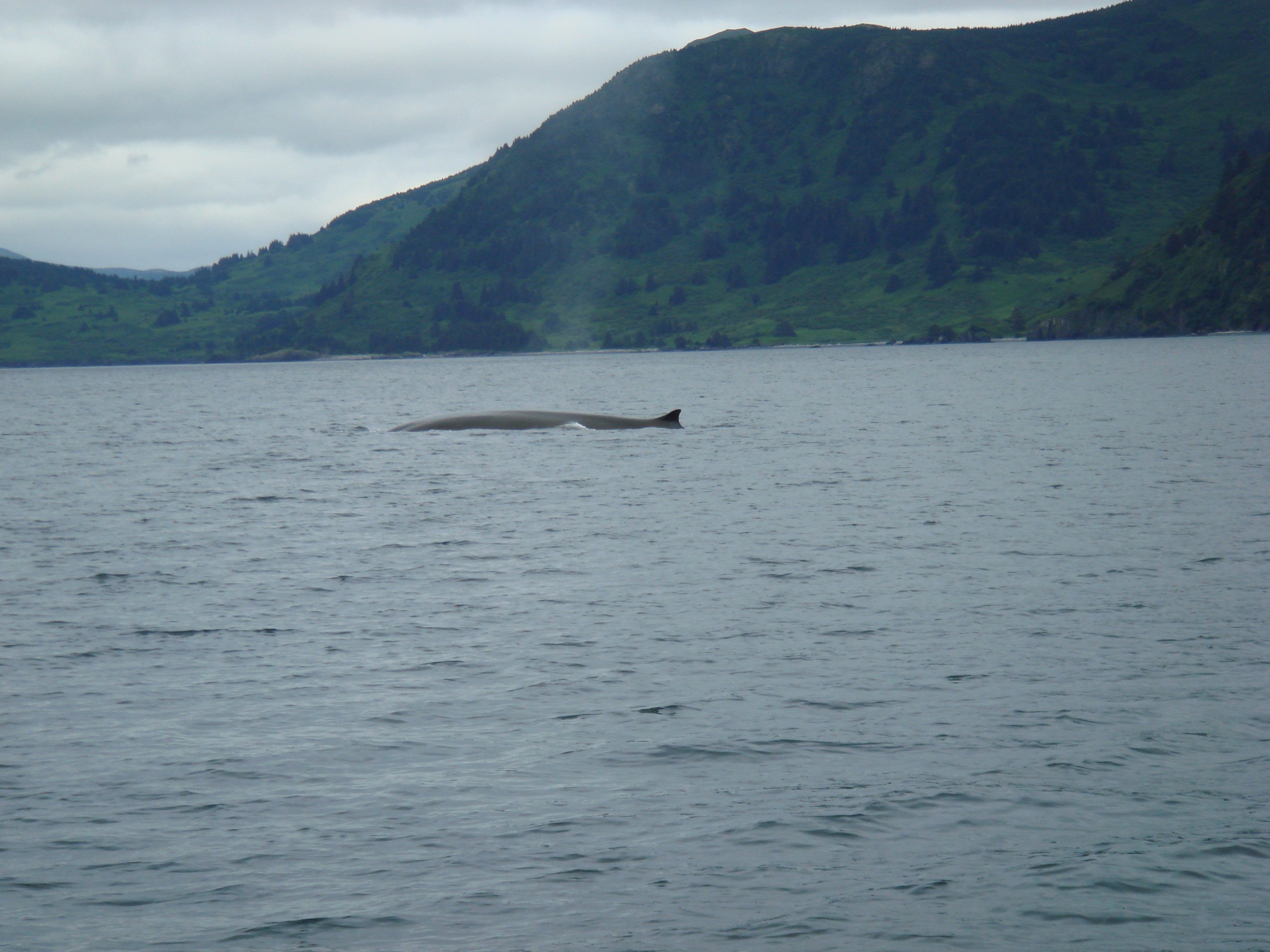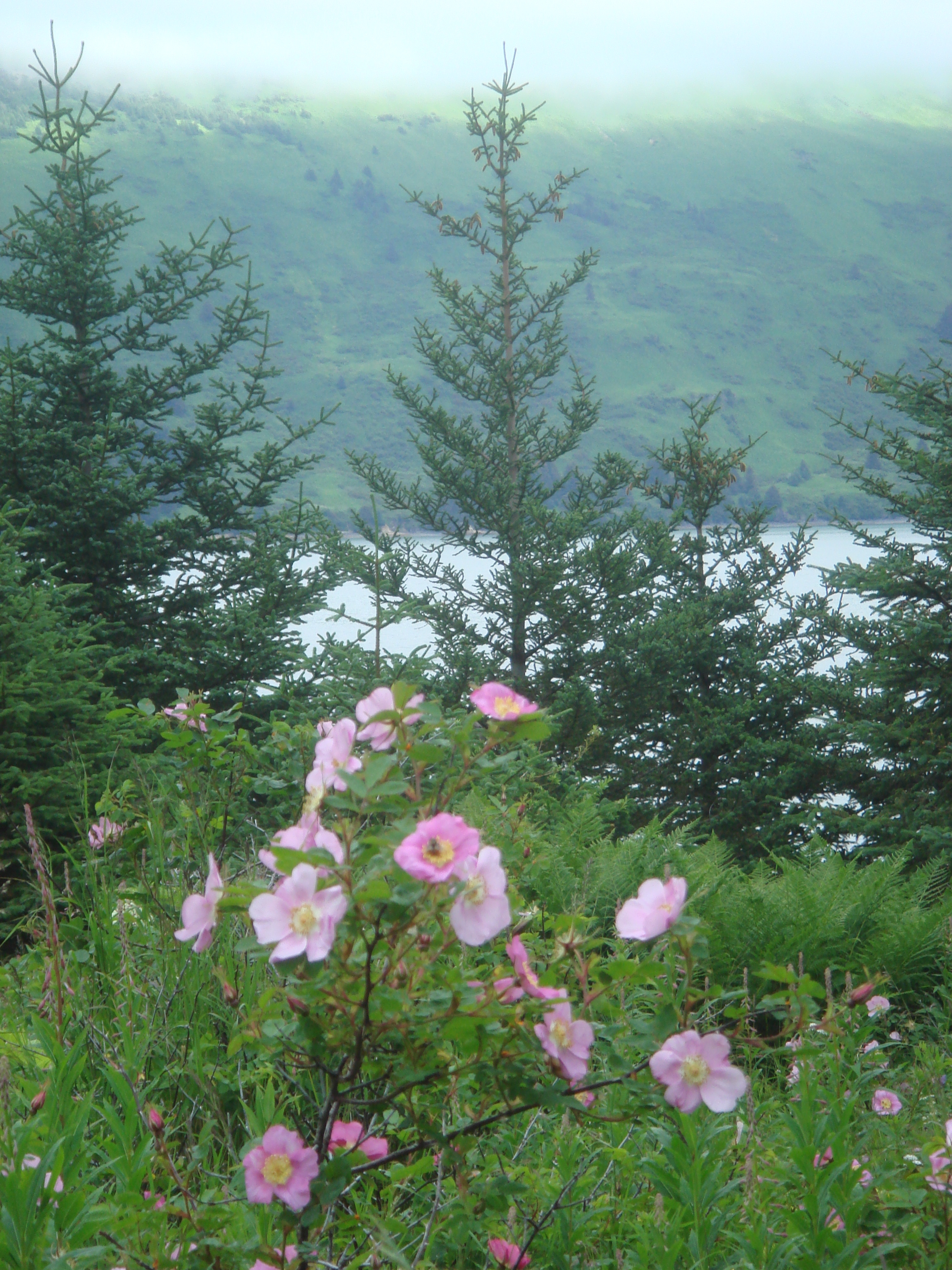Raspberry Island, Alaska on:
[Wikipedia]
[Google]
[Amazon]
 Raspberry Island (russian: Малиновый) is an island of the Kodiak Archipelago located in the Gulf of Alaska in the U.S. state of Alaska. It is located two miles northwest of Whale Island, and just across the mile-wide Raspberry Strait from the southwestern end of
Raspberry Island (russian: Малиновый) is an island of the Kodiak Archipelago located in the Gulf of Alaska in the U.S. state of Alaska. It is located two miles northwest of Whale Island, and just across the mile-wide Raspberry Strait from the southwestern end of


 Originally inhabited by Aleut natives for over 7000 years, Russian fur traders took control of the islands in the 18th century and nearly wiped out the now abundant
Originally inhabited by Aleut natives for over 7000 years, Russian fur traders took control of the islands in the 18th century and nearly wiped out the now abundant
 After the decline of the canneries, their land was eventually purchased and used by the two wilderness lodges as tourist destinations. They are unique because the land surrounding them and on the opposing
After the decline of the canneries, their land was eventually purchased and used by the two wilderness lodges as tourist destinations. They are unique because the land surrounding them and on the opposing
 There are no roads on Raspberry island except between the lodgings at one of the two wilderness lodges. Hiking trails do exist and are used by wildlife as well as the occasional human. Although it has been known to happen that people have arrived at Raspberry via kayak while on an extreme wilderness adventure, most transportation to and from the island is by
There are no roads on Raspberry island except between the lodgings at one of the two wilderness lodges. Hiking trails do exist and are used by wildlife as well as the occasional human. Although it has been known to happen that people have arrived at Raspberry via kayak while on an extreme wilderness adventure, most transportation to and from the island is by
File:Kayaking in Alaska P1010034.JPG , Kayakers off the coast of Raspberry Island.
File:Seiner off the coast of the Kodiak Archipelago, Alaska 2009 218.jpg, A seiner netting salmon in July off the coast of Raspberry Island, Alaska
File:Bald Eagle, resting in Alaska 2009 007.jpg,
Raspberry Island Remote Lodge
{{authority control Islands of the Kodiak Archipelago Former populated places in Alaska Islands of Alaska
Afognak
Afognak (Alutiiq language, Alutiiq: ''Agw’aneq''; russian: Афогнак) is an island in the Kodiak Archipelago north of Kodiak Island in the U.S. state of Alaska. It is long from east to west and wide from north to south and has a land ...
. The island is separated from Kodiak Island by the Kupreanof Strait, with the Shelikof Strait to the northwest. Raspberry Island is 18 miles (29 km) long with a width that varies from 3 miles (4.8 km) to 8 miles (12.9 km). The highest point on the island is 3,300 ft (1000 m).
The island is considered part of the Aleneva census-designated place in the Kodiak Island Borough. The only permanent residents on Raspberry Island are located at Port Wakefield Port Wakefield may refer to.
Australia
*Port Wakefield, South Australia, a town and locality
* Port Wakefield railway line, part of the now-closed Balaklava-Moonta railway line in South Australia
* Port Wakefield Circuit, a former motor racing cir ...
and Raspberry Island Remote Lodge which operate full service wilderness lodges. Power is provided via hydro power harnessed in nearby creeks. The nearest town is Kodiak, Alaska, an hour-and-a-half boat ride or a thirty-minute float plane ride away.
Environment and wildlife
Sitka spruce
''Picea sitchensis'', the Sitka spruce, is a large, coniferous, evergreen tree growing to almost tall, with a trunk diameter at breast height that can exceed 5 m (16 ft). It is by far the largest species of spruce and the fifth-larg ...
is one of the dominant trees on Raspberry Island. Spruce forests are interrupted by fields of salmonberry bushes, alders and wildflowers. Higher elevations have wild blueberry and cranberry bushes with more grasses. Wildlife of note on the island includes Sitka deer
The Sitka deer or Sitka black-tailed deer (''Odocoileus hemionus sitkensis'') is a subspecies of mule deer (''Odocoileus hemionus''), similar to the Columbian black-tailed subspecies (''O. h. colombianus''). Their name originates from Sitka, A ...
, red fox
The red fox (''Vulpes vulpes'') is the largest of the true foxes and one of the most widely distributed members of the Order (biology), order Carnivora, being present across the entire Northern Hemisphere including most of North America, Europe ...
es and Kodiak bears, as well as tufted puffins and bald eagle
The bald eagle (''Haliaeetus leucocephalus'') is a bird of prey found in North America. A sea eagle, it has two known subspecies and forms a species pair with the white-tailed eagle (''Haliaeetus albicilla''), which occupies the same niche as ...
s.
Afognak and Raspberry islands are the only locations in Alaska with elk populations.
The island's Roosevelt Elk developed from eight calves translocated from Washington state's Olympic Peninsula in 1928. The elk have adapted well to the island, with some mature bulls weighing nearly .
The muskrat
The muskrat (''Ondatra zibethicus'') is a medium-sized semiaquatic rodent native to North America and an introduced species in parts of Europe, Asia, and South America. The muskrat is found in wetlands over a wide range of climates and habitat ...
is another species that was successfully introduced to the island. Whales commonly meander down Raspberry Strait but must turn around because it becomes too shallow for them to pass all the way through. Kayakers take advantage of this phenomenon to wait for them to pass by again on their way back out to deeper water. Bald eagles are abundant.
History
sea otter
The sea otter (''Enhydra lutris'') is a marine mammal native to the coasts of the northern and eastern North Pacific Ocean. Adult sea otters typically weigh between , making them the heaviest members of the weasel family, but among the small ...
s that can often be seen floating together in the strait. Several fishing canneries existed on the island including Port Wakefield and Northwest Cannery in the early 20th century. These went out of business several decades later and a fox fur farm existed on the Northwest Cannery site for a while. Deposits of placer gold were noted at Raspberry Beach as early as 1915.
However, the last recorded mining activity on the beach was in 1935. The half-mile long beach is located on the northwest coast of the island at Drivers Bay. Much of the island is owned by the First Native Corporation and is uninhabited except for the two wilderness lodges that exist on land previously owned by the canneries.
Economy
 After the decline of the canneries, their land was eventually purchased and used by the two wilderness lodges as tourist destinations. They are unique because the land surrounding them and on the opposing
After the decline of the canneries, their land was eventually purchased and used by the two wilderness lodges as tourist destinations. They are unique because the land surrounding them and on the opposing Afognak Island
Afognak (Alutiiq: ''Agw’aneq''; russian: Афогнак) is an island in the Kodiak Archipelago north of Kodiak Island in the U.S. state of Alaska. It is long from east to west and wide from north to south and has a land area of , making ...
is owned by the First Native corporation and almost completely uninhabited. Fishing vessels based in the city of Kodiak and Port Lions regularly fish the waters around Raspberry Island for the abundant salmon and halibut. Tourists frequent the two wilderness lodges that provide bear viewing, kayaking, extreme wilderness adventures and backpacking, ocean and fly fishing as well as hunting excursions. National Geographic filmed a true television story about two hunters that had separate bear encounters on Kodiak, one hunter was killed by a bear on nearby Uganik Island, the other stabbed the bear with a knife and then killed it with a gun on Raspberry Island and was able to drag himself out to be rescued by his son and Coast Guard airlift. Silver Salmon is one of the salmon spawning streams on the island available to fishermen and observers.
Transportation
floatplane
A floatplane is a type of seaplane with one or more slender floats mounted under the fuselage to provide buoyancy. By contrast, a flying boat uses its fuselage for buoyancy. Either type of seaplane may also have landing gear suitable for land, ...
or boat. All inhabitants, tourists, and supplies arrive at the island by first going through the city of Kodiak, Alaska, the nearest town, which is an hour-and-a-half boat ride or a thirty-minute float plane ride away.
Additional Images
Bald eagles
The bald eagle (''Haliaeetus leucocephalus'') is a bird of prey found in North America. A sea eagle, it has two known subspecies and forms a species pair with the white-tailed eagle (''Haliaeetus albicilla''), which occupies the same niche as ...
are abundant on Raspberry Island.
File:Dall's porpoise Alaska 2009 124.jpg , A wild Dall's porpoise posing for her Wikipedia photo on a calm day in the Shelikof Strait off the coast of Raspberry Island
File:Dall's Porpoise in shadow of boat and photographer Alaska 2009 130.jpg, A wild Dall's porpoise plays in the shadow of a boat and photographer in the Shelikof Strait
File:Mountaintop Lupin overlooking Raspberry Strait, Alaska 2009 114.jpg, Lupin
''Lupinus'', commonly known as lupin, lupine, or regionally bluebonnet etc., is a genus of plants in the legume family Fabaceae. The genus includes over 199 species, with centers of diversity in North and South America. Smaller centers occur ...
and other wildflowers cover the mountaintop on Raspberry Island. Cranberries, blueberries, bearberries and salmonberries are also found in abundance.
File:Polemonium acutiflorum on the Kodiak Archipelago, Alaska 2009 disk 3 011.jpg, Wildflowers growing on the mountaintop of Raspberry Island
File:Alaska 2009 211.jpg, A mountain stream on Raspberry Island
File:Wild purple Iris on the Kodiak Archipelago, Alaska 2009 200.jpg, A field of purple iris on Raspberry Island
File:Kimberly Alaska 325.jpg, Silver salmon caught in the ocean just off Raspberry Island, Alaska
References
External links
Raspberry Island Remote Lodge
{{authority control Islands of the Kodiak Archipelago Former populated places in Alaska Islands of Alaska